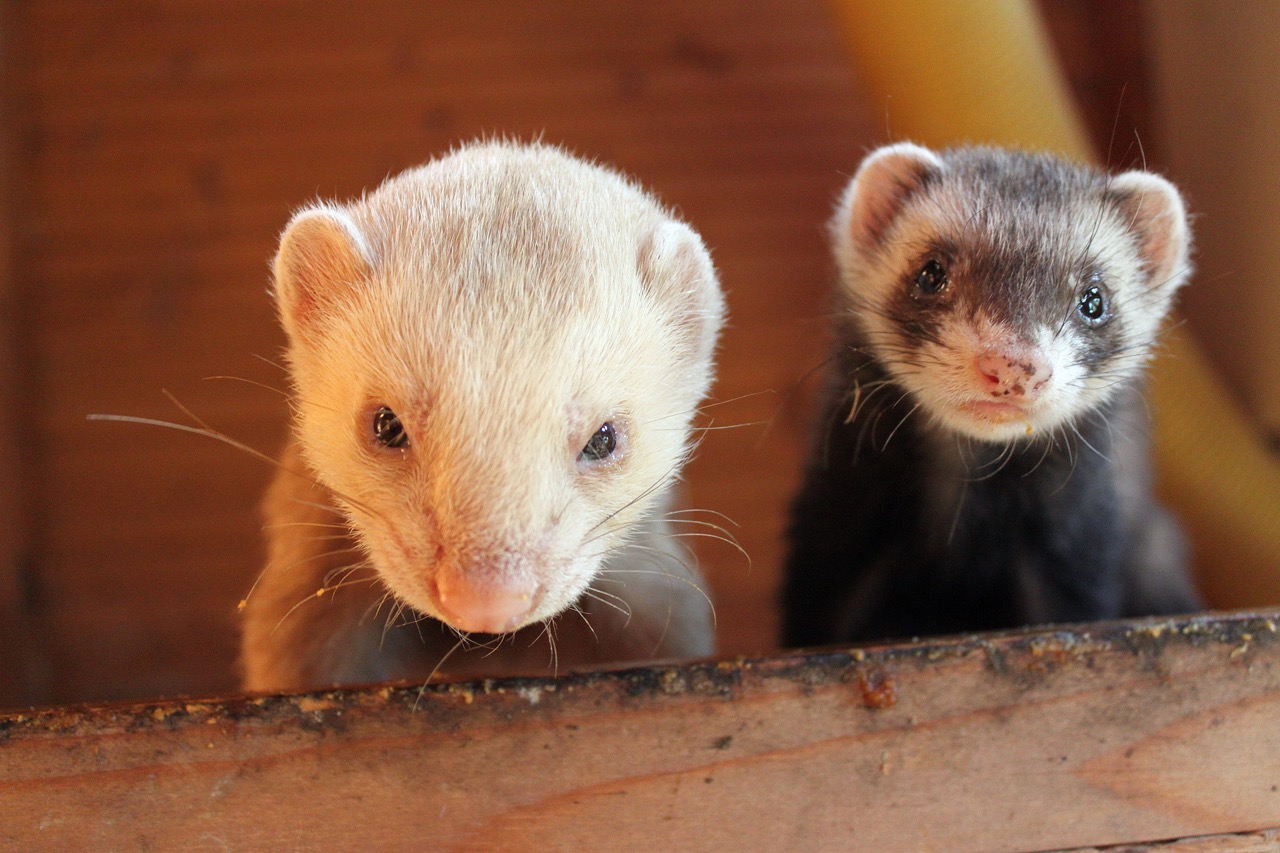Creating a comfortable and inviting environment for your ferret is essential to their well-being and happiness. Ferrets are playful, curious, and social creatures that thrive in habitats that cater to their natural instincts. By understanding their needs and preferences, you can transform a basic cage into a cozy home that promotes their physical and mental health. This guide will explore how to make a ferret cage feel like home, covering their natural habits, the best cage options, essential accessories, and tips for enhancing their habitat.
Understanding Your Ferret’s Natural Habits and Needs
Ferrets are highly active animals that require plenty of space to explore and play. In the wild, they are known to roam large territories, so it is crucial to provide them with an environment that allows for physical activity and mental stimulation. Understanding their natural behaviors, such as burrowing, climbing, and hiding, can help you create a cage setup that mimics their instincts. You will want to consider the importance of vertical space, as ferrets love to climb and perch on elevated surfaces.
Social interaction is another key aspect of a ferret’s life. They are pack animals by nature and thrive when they have companionship, either from fellow ferrets or their human caretakers. This means that the cage should facilitate bonding opportunities, allowing for play and interaction during both active and quiet times. Additionally, ferrets have specific dietary needs and require a balanced diet, which should be reflected in their living space through appropriate feeding areas.
Lastly, ferrets are crepuscular creatures, meaning they are most active during dawn and dusk. This behavior informs their need for a varied environment that includes hiding spots where they can retreat during the day. Providing dark, cozy spaces within the cage can replicate their natural sleeping conditions, making them feel safe and secure. By acknowledging these habits and needs, you can begin to design a ferret-friendly habitat.
Choosing the Right Size and Style of Ferret Cage
Selecting the appropriate cage size is critical for a ferret’s well-being. A minimum recommended cage size for a single ferret is 24 inches wide by 24 inches deep and at least 36 inches high. However, larger is always better, especially if you have multiple ferrets. An ideal ferret cage should offer ample room for climbing and exploring, as well as provide space for various accessories and enrichment items.
In addition to size, the cage style is vital for ensuring your ferret’s comfort. Many ferret owners prefer multi-level cages, as they provide vertical space for climbing and exploring. Look for cages with ramps, shelves, and various levels, which will encourage your ferret to engage in natural behaviors. Additionally, consider cages that are easy to clean, as ferrets can be messy, and you will want to maintain a hygienic environment.
Another factor to consider is the bar spacing of the cage. Ferrets are known for their ability to squeeze through tight spaces, so choose a cage with bar spacing of no more than 1 inch. This will help prevent escapes and ensure their safety. By selecting the right size and style of cage, you can lay the foundation for a comfortable and engaging living space for your ferret.
Essential Accessories for a Comfortable Ferret Environment
When creating a ferret-friendly cage, the right accessories are essential for comfort and engagement. Start with cozy sleeping areas such as hammocks, tunnels, and beds made from soft materials. These provide warmth and a sense of security, allowing your ferret to retreat and relax when they need down time. Make sure to place these resting areas in quiet corners of the cage to give your ferret a private space.
Additionally, including litter boxes is vital for maintaining hygiene within the cage. Ferrets can be trained to use litter boxes, which can help minimize mess and make cleaning more manageable. Choose litter that is safe and absorbent, avoiding dusty types that might irritate your pet’s respiratory system. Regularly clean the litter box to ensure a pleasant environment for your ferret.
Lastly, incorporate toys and enrichment items into the cage to keep your ferret entertained and stimulated. Ferrets enjoy a variety of toys, from chewable items to interactive puzzles that challenge their problem-solving skills. Rotate toys regularly to keep their environment fresh and exciting. By providing these essential accessories, you will ensure that your ferret feels at home and can engage in their natural behaviors.
Tips for Creating a Safe and Engaging Ferret Habitat
Safety should always be a priority when designing your ferret’s habitat. Ensure that the cage is securely closed with locks that are difficult for ferrets to open. Remove any small items or hazards within the cage that could be ingested or cause injury, such as rubber bands, strings, or loose wires. Regularly inspect the cage for weak spots or potential escape routes, as ferrets are notorious for their ability to squeeze through tight spaces.
In addition to safety, creating an engaging environment is key to your ferret’s happiness. Consider adding various levels of platforms and ramps for climbing, as well as tunnels for burrowing and exploration. These additions can mimic their natural habitat and encourage physical activity. You can also create a play area outside of the cage for supervised playtime, providing even more opportunities for exploration.
Lastly, consider incorporating scents and sounds into your ferret’s environment to stimulate their senses. You can use safe, ferret-friendly essential oils or natural bedding that offers comforting scents. Likewise, gentle background music or nature sounds can create a calming atmosphere. The combination of safety, engagement, and sensory stimulation will ensure your ferret feels comfortable and at home in their habitat.
In conclusion, making a ferret cage feel like home involves a thoughtful approach that considers their natural habits, the right cage size and style, essential accessories, and tips for safety and engagement. By creating an environment that mirrors their instincts and offers comfort, you can help promote your ferret’s overall well-being. With the right setup, your ferret will not only thrive but also bring joy and companionship to your life. Implement these strategies to ensure your ferret feels at home in their space, leading to a happier and healthier pet.










